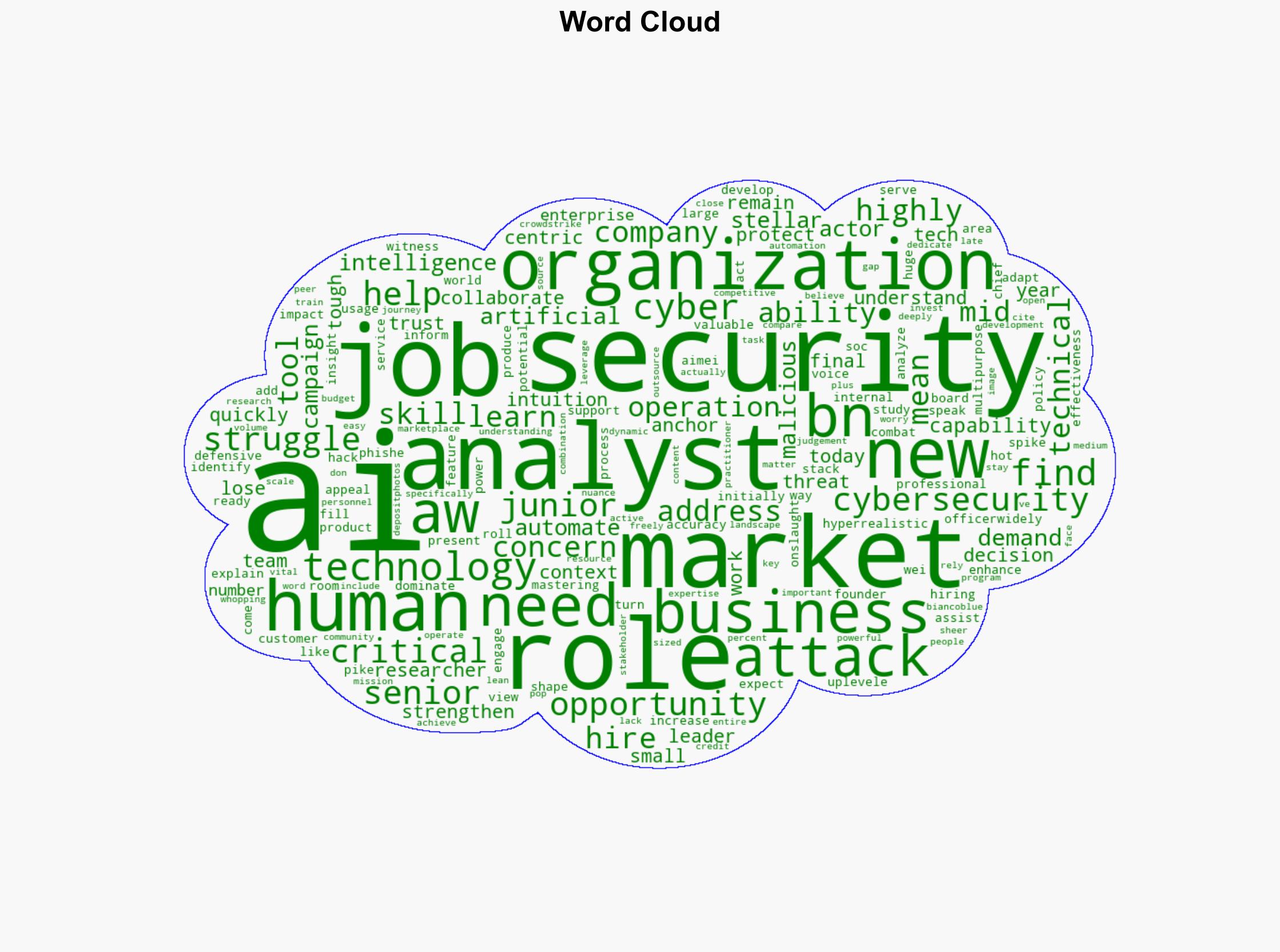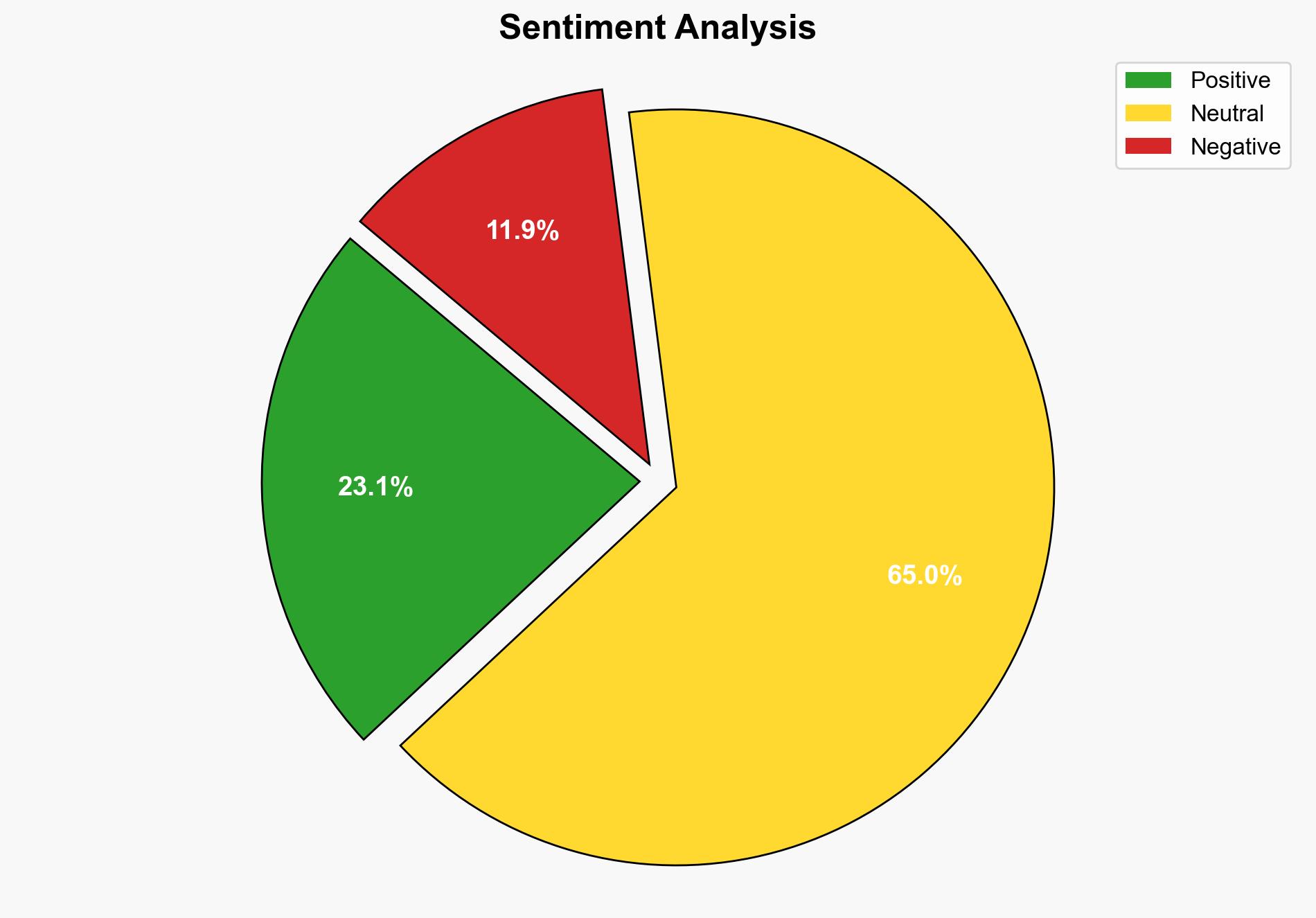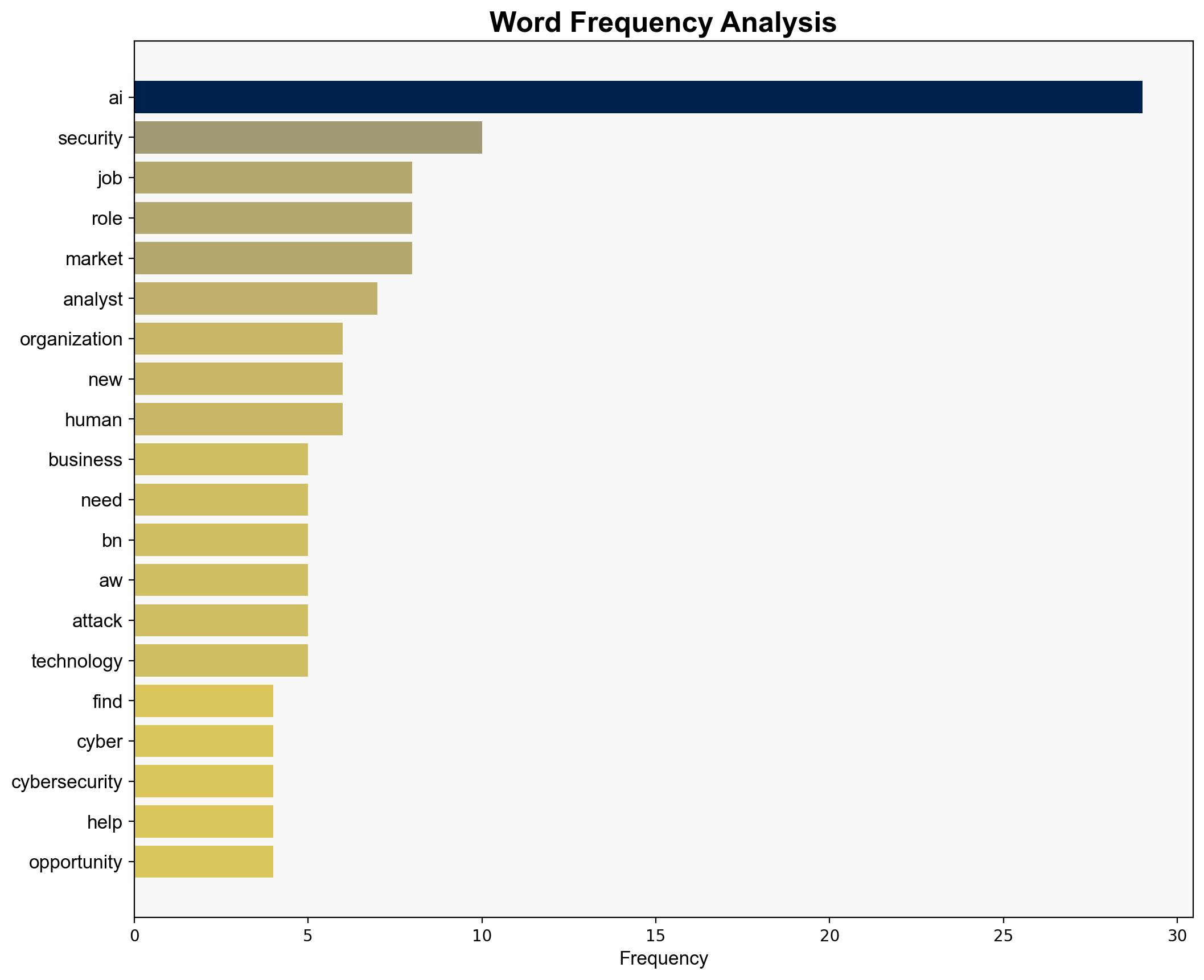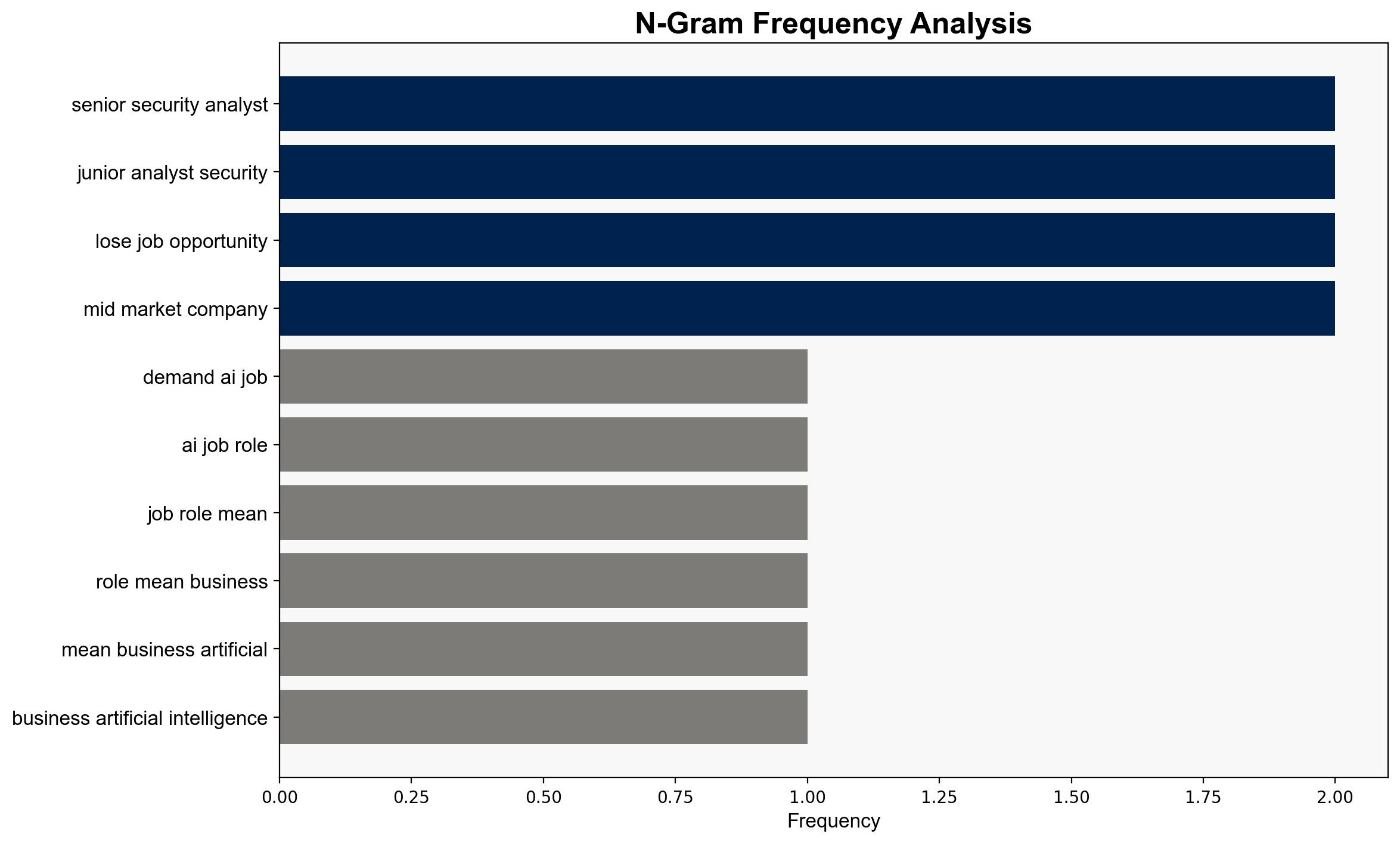The in-demand AI job roles and what they mean for business QA – BetaNews
Published on: 2025-04-23
Intelligence Report: The in-demand AI job roles and what they mean for business QA – BetaNews
1. BLUF (Bottom Line Up Front)
The increasing integration of artificial intelligence (AI) in cybersecurity is reshaping the job market, creating new roles and demands for skills. Organizations need to adapt by hiring for AI-centric positions such as AI researchers and security analysts to enhance their cyber defense capabilities. The strategic focus should be on bridging the AI skills gap and leveraging AI tools to counteract sophisticated cyber threats.
2. Detailed Analysis
The following structured analytic techniques have been applied to ensure methodological consistency:
Analysis of Competing Hypotheses (ACH)
The hypothesis that AI will enhance cybersecurity capabilities is supported by evidence of AI’s ability to automate defensive measures and analyze threats. Alternative hypotheses, such as AI being a threat to job security, are less substantiated given the ongoing need for human oversight and decision-making in AI applications.
SWOT Analysis
Strengths: AI’s capability to automate and enhance threat detection.
Weaknesses: Current skills gap in AI expertise.
Opportunities: Training and development in AI skills for cybersecurity professionals.
Threats: Malicious actors using AI to enhance cyber attacks.
Indicators Development
Key indicators include the frequency of AI-enhanced phishing campaigns and the adoption rate of AI tools in cybersecurity operations. Monitoring these can help identify emerging threats and the effectiveness of AI defenses.
3. Implications and Strategic Risks
The rapid adoption of AI in cybersecurity presents both opportunities and risks. While AI can significantly bolster defenses, it also introduces new vulnerabilities if not properly managed. The reliance on AI tools could lead to overconfidence, potentially overlooking the need for human oversight. Additionally, the skills gap poses a risk to maintaining effective cybersecurity operations.
4. Recommendations and Outlook
- Invest in AI training programs to upskill current cybersecurity personnel.
- Develop robust AI governance frameworks to ensure ethical and effective use of AI tools.
- Scenario-based projections:
- Best Case: Successful integration of AI tools leads to enhanced cybersecurity and reduced threat impact.
- Worst Case: Failure to address the skills gap results in increased vulnerability to AI-enhanced attacks.
- Most Likely: Gradual improvement in cybersecurity capabilities as organizations adapt to AI integration.
5. Key Individuals and Entities
Aimei Wei
6. Thematic Tags
(‘cybersecurity’, ‘AI integration’, ‘skills gap’, ‘cyber defense’, ‘threat analysis’)





